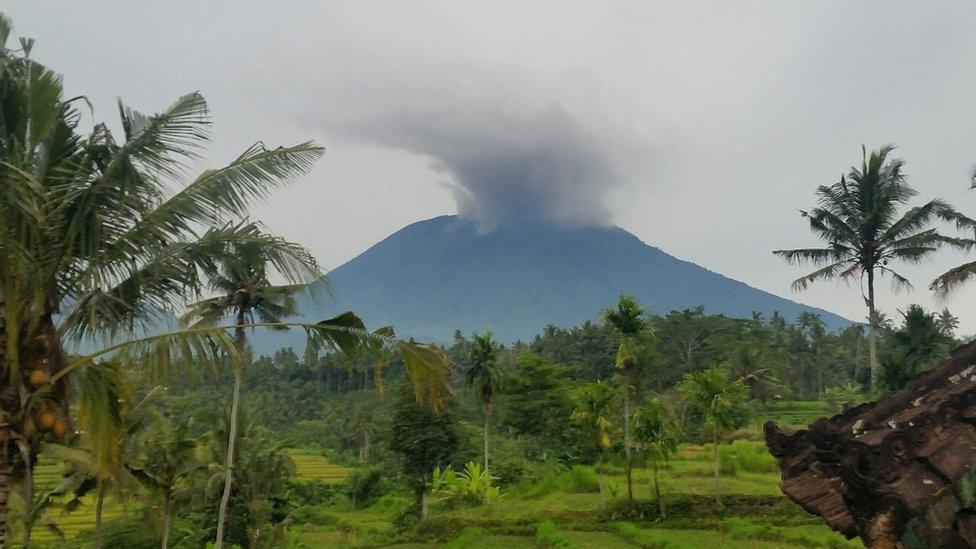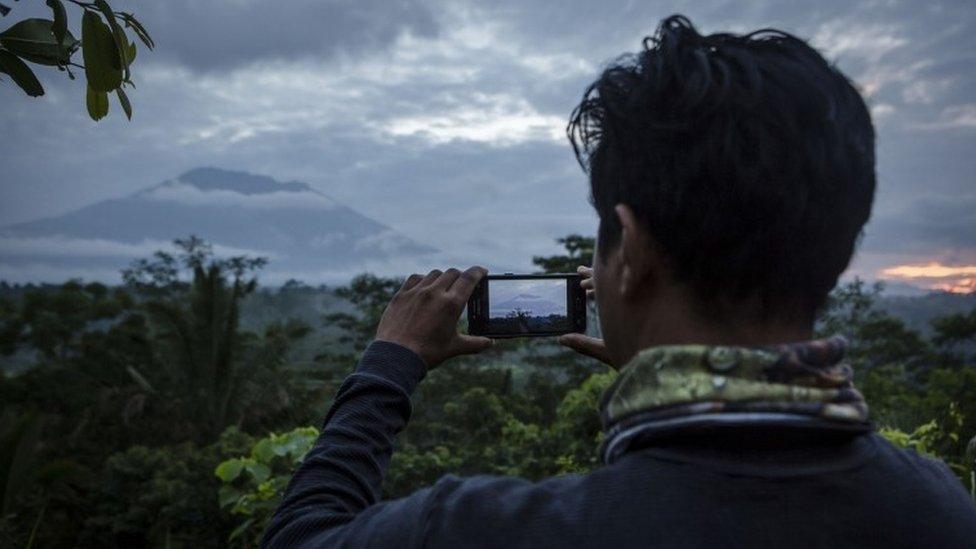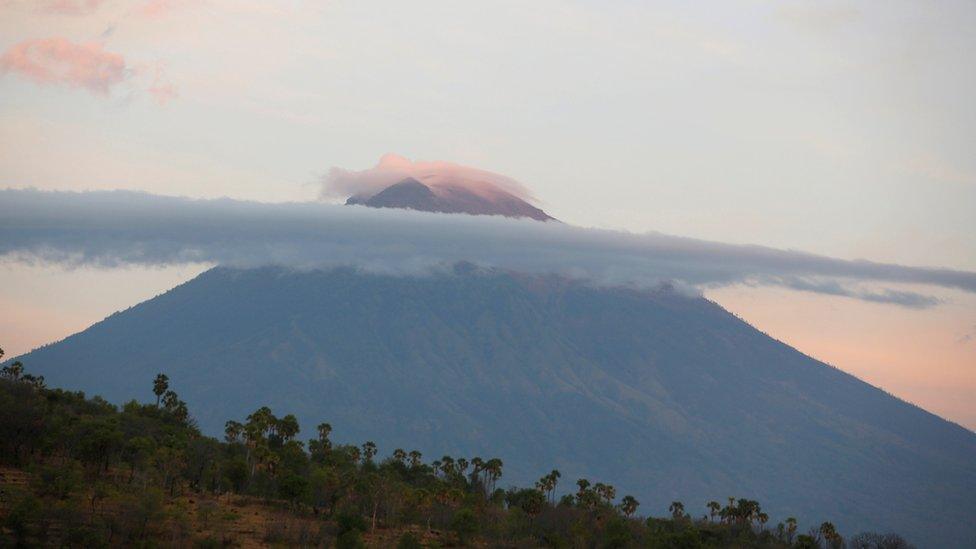Thousands leave their houses as Mount Agung volcano erupts
- Published

Tens of thousands of people fled their homes near Mount Agung
A volcano on the Indonesian island of Bali has erupted for the first time in more than 50 years, the country's national disaster agency says.
More than 140,000 people had fled their homes in recent months before Mount Agung began belching smoke 700m (2,300ft) above its summit on Tuesday.
Nearly 1,600 people died when Mount Agung last erupted in 1963.
So far, there have been no changes to flights in the region despite the eruption.
A spokesperson for the national disaster agency said Mount Agung was undergoing phreatic eruptions, which happen when water beneath the ground or on the surface is heated by magma.
Phreatic eruptions also took place during the catastrophic eruption of Krakatoa in Indonesia in 1883, which killed 40,000 people.
Survivors of the 1963 eruption on the last time Mount Agung erupted
Villagers near the mount were first told to leave in August when it started rumbling but were later allowed to return home. Since then the mount has been rumbling intermittently.
Many of those who returned home have now been ordered to leave and stay overnight in village halls and temples a safe distance from the volcano.
Indonesia sits on the Pacific "Ring of Fire" where tectonic plates collide, causing frequent seismic and volcanic activity.
According to official estimates, the holiday island of Bali lost at least $110m (£83m) in tourism and productivity while locals were moved to shelters.
However, the island's airport remains open with no changes to flights, and tourist areas are safe according to Indonesia's disaster agency.
Evacuees from near Mount Agung brought their birds, chickens and dogs with them
- Published25 September 2017

- Published26 September 2017
